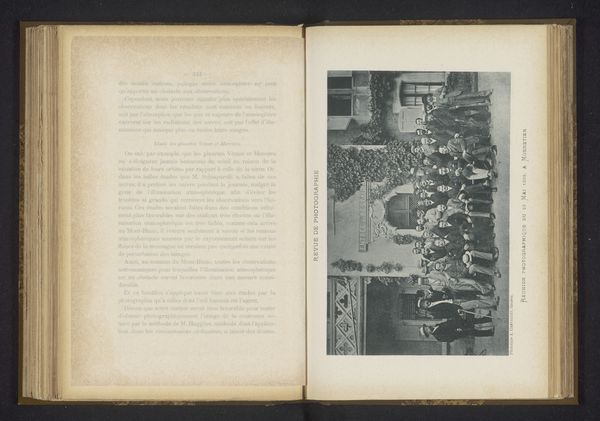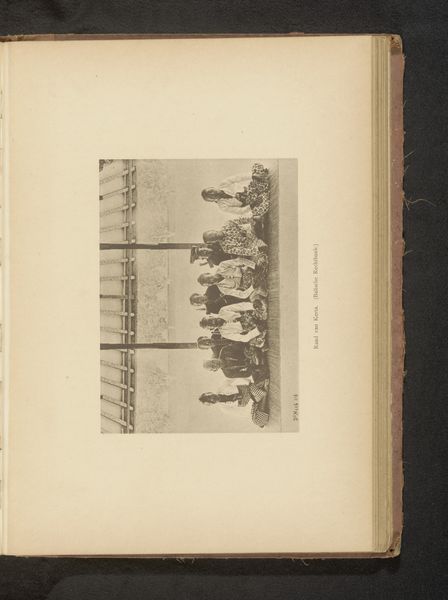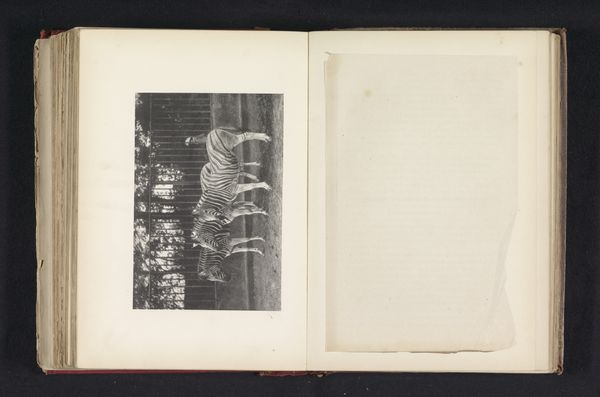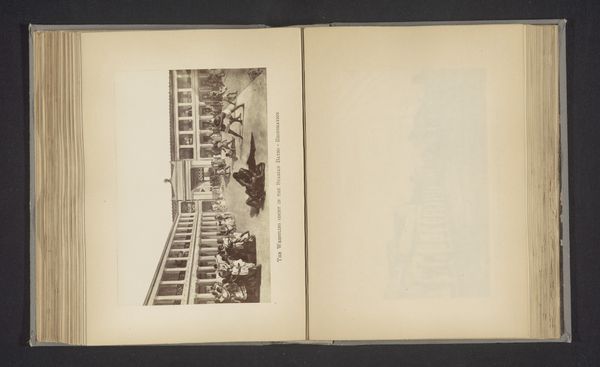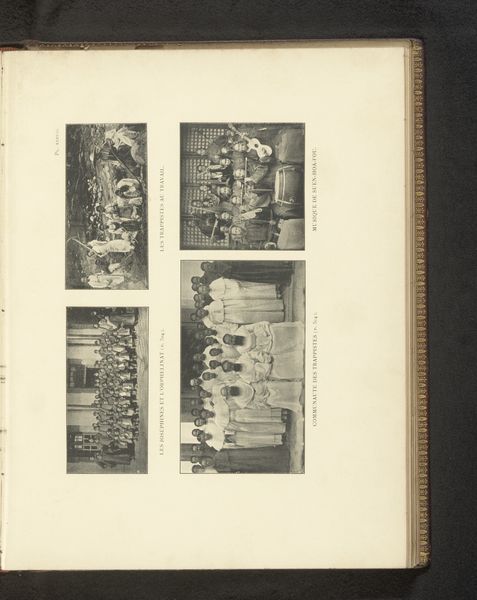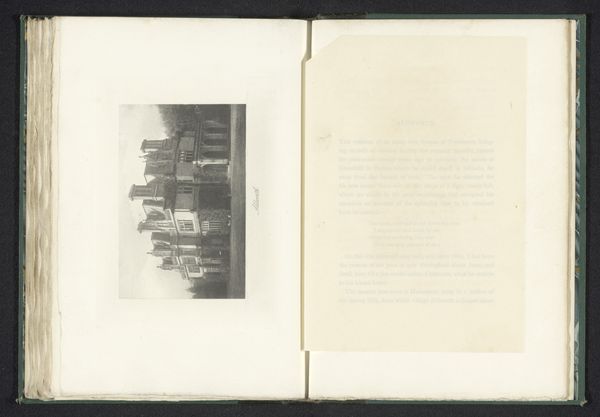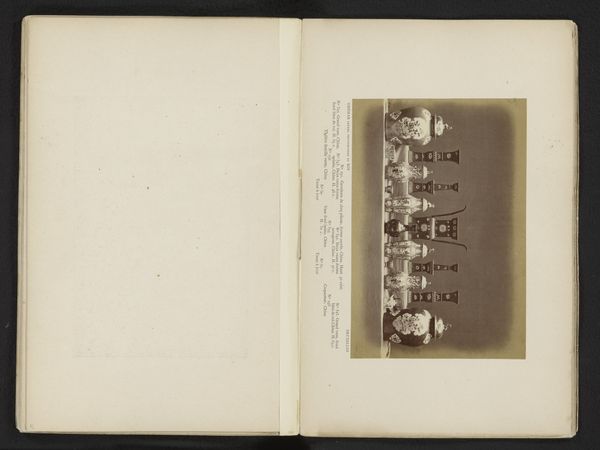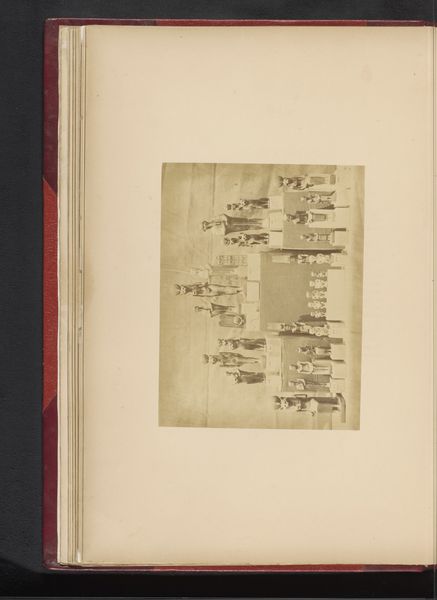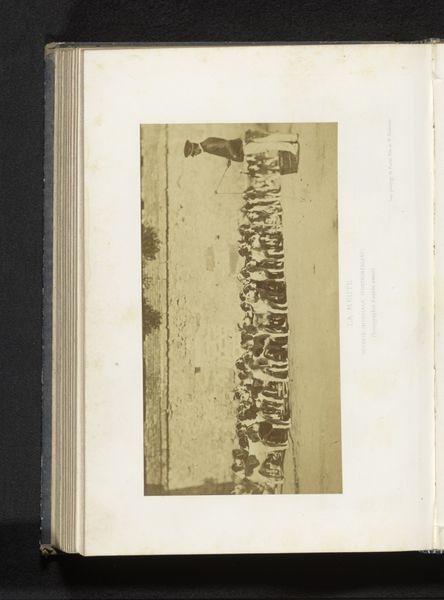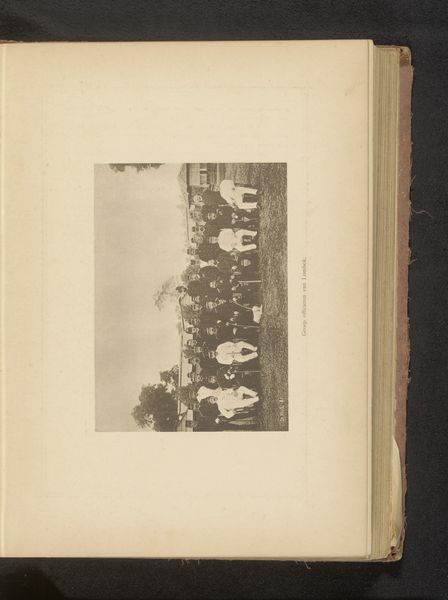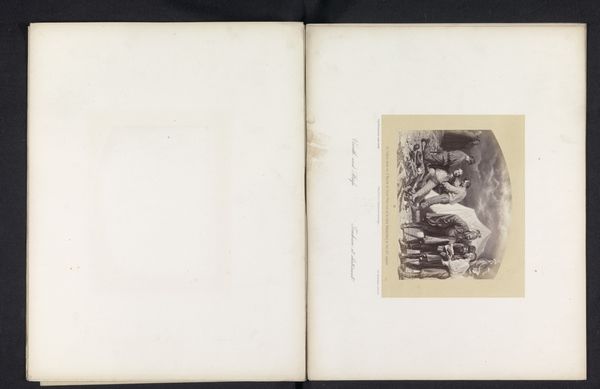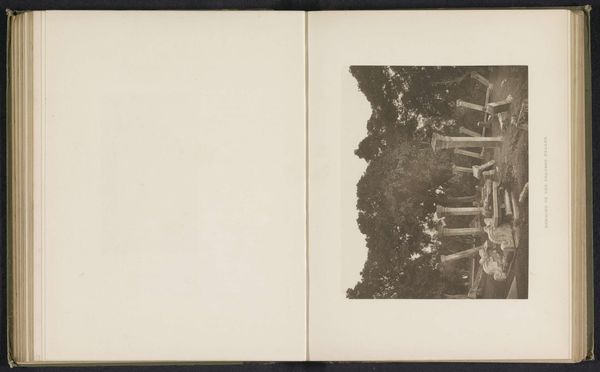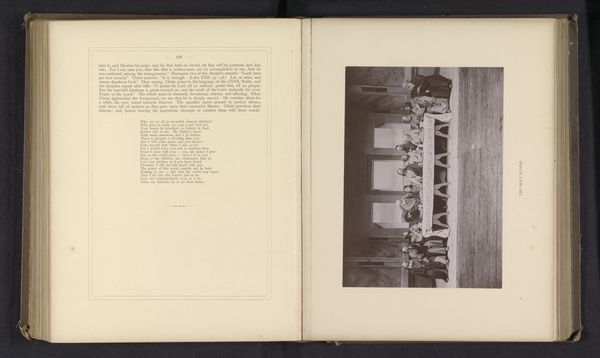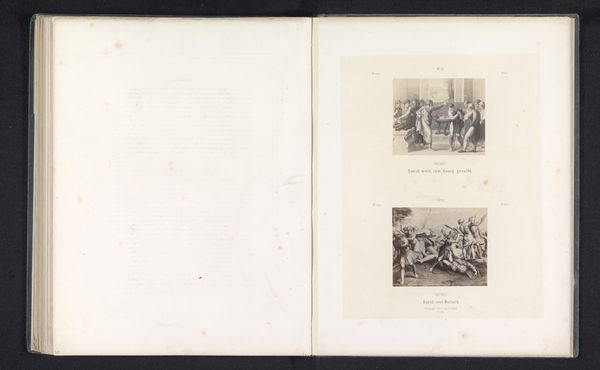
#
aged paper
#
toned paper
#
ink paper printed
#
hand drawn type
#
fading type
#
coloured pencil
#
watercolour bleed
#
watercolour illustration
#
sketchbook art
#
watercolor
Dimensions: height 151 mm, width 182 mm
Copyright: Rijks Museum: Open Domain
Editor: This is "Gezicht op de ruïne van Builwas Abbey," by William Bryans, dated before 1858. It appears to be an illustration within a sketchbook. The image itself is quite muted, giving it an almost ghostly presence. The crumbling architecture stands in stark contrast to the inscription on the adjacent page. What strikes you about this piece? Curator: The placement of the image within the bound book immediately informs its reception. This isn’t simply a representation of a ruin; it's a curated view presented to a specific audience. In the 19th century, images of ruins had immense socio-political weight. What narratives did these ruins tell? Were they symbols of a glorious past, reminders of societal decline, or perhaps justifications for contemporary building programs? Editor: That’s interesting, I hadn't thought of it that way. How did the perception of ruins shift with the rise of museums and galleries? Curator: Precisely. The emerging institutions shaped how these remnants were perceived. Rather than solely being symbols of decay or nostalgia, ruins were increasingly framed as historical documents and archaeological finds, often becoming the subject of preservation and scientific study. The sketchbook format here, and the likely amateur status of the artist, places this image within a dialogue concerning British identity, tourism, and the picturesque. Why sketch this particular abbey, and for whom? Editor: So, this piece hints at a larger conversation about national identity and the role of historical sites? Curator: Indeed. And how that conversation played out in public spaces and private collections. It invites us to consider who gets to tell these stories, and how those stories are presented and preserved. Editor: I see. Thanks for highlighting that. It’s definitely given me a broader context to understand this image. Curator: My pleasure. It is important to consider the way artworks functioned publicly and politically, so it will inform future dialogues regarding how art shapes the world.
Comments
No comments
Be the first to comment and join the conversation on the ultimate creative platform.
